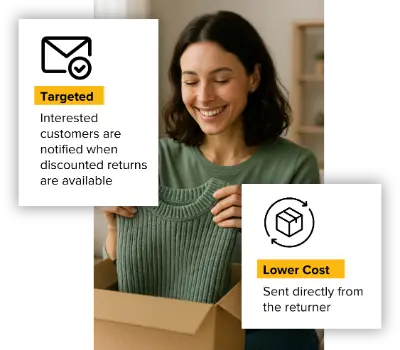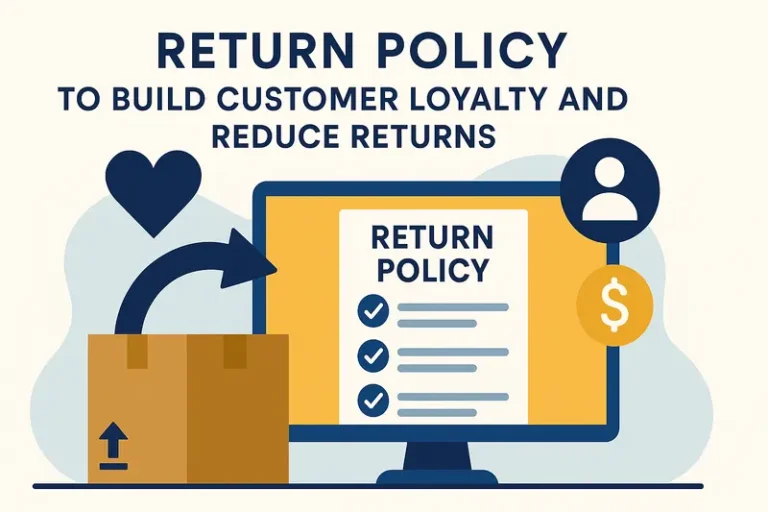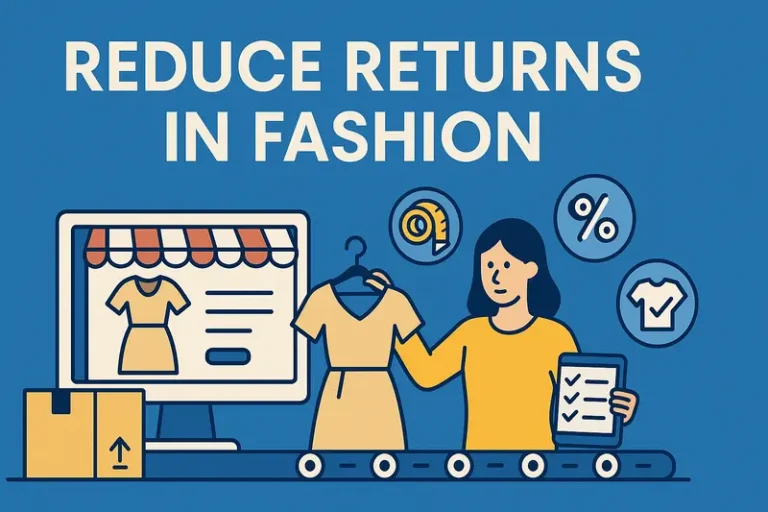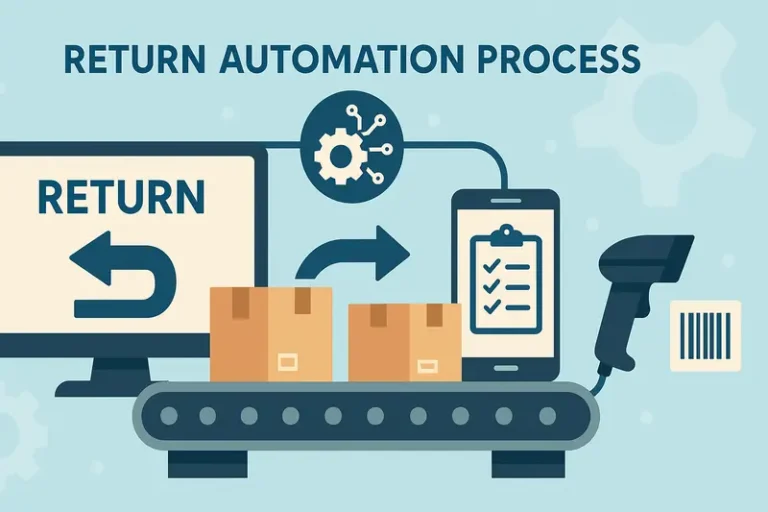Amazon FBA Grade and Resell: Program Benefits and Pitfalls

Last updated on March 20, 2025
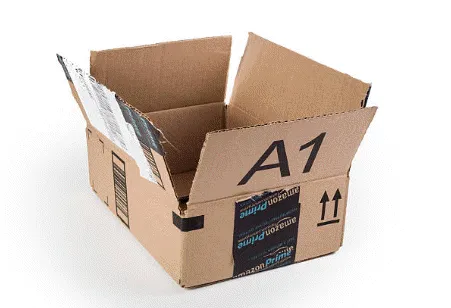
In this article
 10 minutes
10 minutes
- Online Returns are Really Expensive
- Amazon FBA Grade and Resell Program
- How the FBA Grade and Resell Program Works
- Building a Sustainable Business Model
- Managing and Monitoring Used Inventory
- Marketing and Promoting Your Products
- FBA Grade and Resell Program Fees
- Benefits of the FBA Grade and Resell Program
- Pitfalls of FBA Grade and Resell Program
- Conclusion
- Frequently Asked Questions
Ecommerce returns are painful for Sellers no matter which way you slice it. They drain attention and resources and directly impact the bottom line regardless if returns fraud is involved, or not. Many estimate that 20 – 30% of ecommerce orders are returned for one reason or another.
Online Returns are Really Expensive
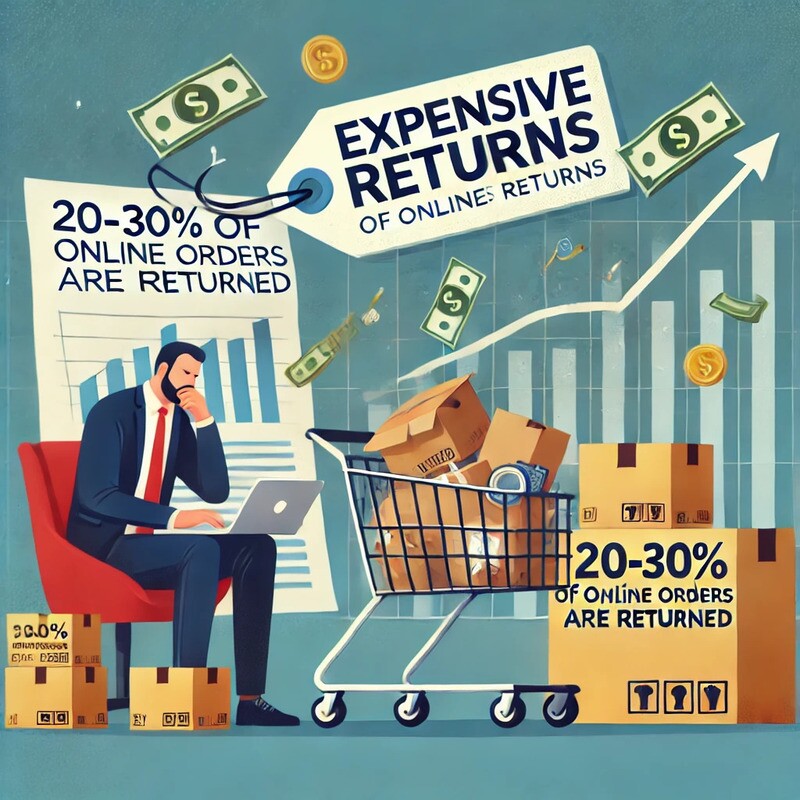
For each returned item, Amazon Third Party Sellers have already absorbed the product cost and the cost of preparing and shipping the inventory from their 3PL provider to multiple FBA fulfillment centers. Then, after an order is received, there are referral fees, fulfillment fees, and storage fees. What’s left after all the other sunk costs is the profit margin. If a customer initiates a free (or significantly subsidized) return, the Seller is expected to eat the costs of the return shipping, product inspection, and subsequent inventory management, which hurts the profit margin or may even turn the sale into a loss.
It’s no wonder many Sellers just offer to let customers keep low-cost items rather than return them because, at a certain point, it doesn’t make sense to process the return and resell it. Without careful cost management, Sellers can easily lose money on these transactions. To help Sellers recoup some value from returns and to get an even larger share of the Third-Party Sellers’ wallet, Amazon has now opened up the FBA Grade and Resell program to all Sellers that use FBA in the US.
Amazon FBA Grade and Resell Program
In the US and Europe, nearly 368MM items were either resold on Amazon in Used Condition or otherwise liquidated or donated last year. However, the FBA Grade and Resell program that enabled this success story was only available to a few Brands. Amazon has now made the program available to all Sellers that use FBA in the US, enabling all Sellers to recover value from inventory that would otherwise be removed or discarded by automatically inspecting, grading, and relisting eligible returned products as “Used” on Amazon’s marketplace. The program is particularly beneficial for items that can no longer be sold in New Condition but retain significant market value.
Not all products are eligible for FBA Grade and Resell. Specific categories are excluded, including but not limited to consumables, dangerous goods (hazmat) and recalled products, gift cards, heavy/bulky SKUs, and products with an average sale price that exceeds $75 (the complete list can be found here). Additionally, items must be returned to ecommerce fulfillment centers that support the program, and Sellers can exclude specific ASINs from the program for any reason.
How the FBA Grade and Resell Program Works
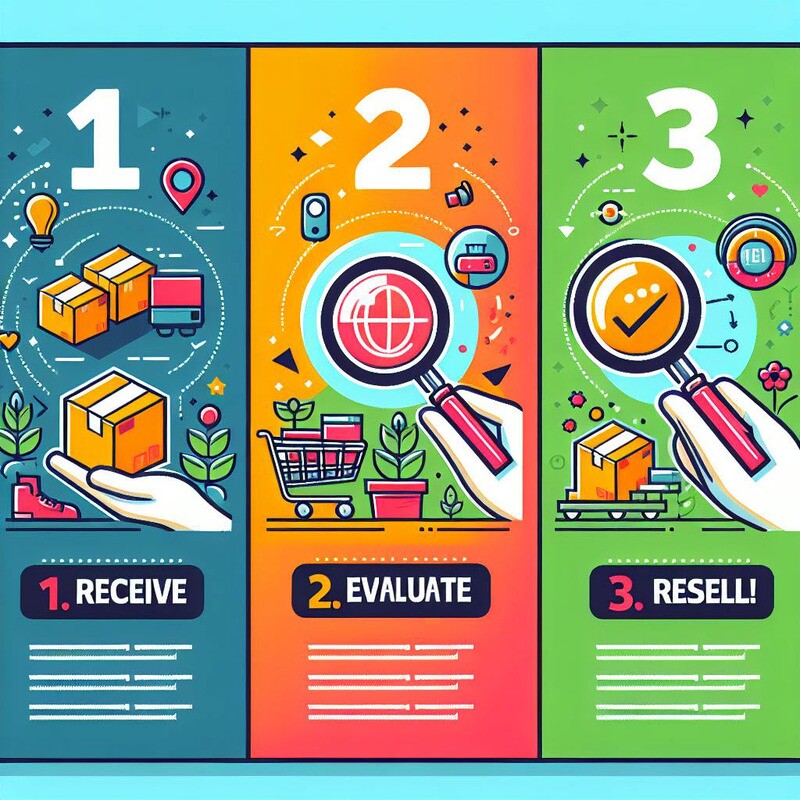
Sellers first enroll in the Grade and Sell program through the Automated Unfulfillable Settings in Seller Central. Once enrolled, eligible customer returns that are unsellable as New are processed through different evaluation paths based on the product type. These paths include non-technical, technical, and specialty grading.
Amazon’s grading process is described as thorough and tailored to each product category. It may include checking for catalog accuracy, inspecting for packaging defects, damage, or cosmetic blemishes, validating functionality, checking accessories, and even memory wiping and factory resetting certain electronics such as laptops and cameras.
After evaluation, items are assigned one of four conditions: Used-Like New, Used-Very Good, Used-Good, or Used-Acceptable. Items that don’t meet these standards are graded as Unsellable. For items graded as Used, Amazon creates a new listing under the parent ASIN in the “New and Used” offers section, with the Seller remaining as Seller of record. They are eligible to become the Used Featured Offer (the default buy box for Used items) if the Seller’s offer meets the pricing and performance criteria and is managed the same way New items are managed, including advertising and pricing. The grading process can take several weeks and longer during peak seasons, so plan accordingly.
Sellers manage the pricing discount that applies to all Used SKUs in the program as a percentage of the New Condition offer price. For example, a Seller might set offers for Used-Like New SKUs as “85%” of the New SKU offer price, which is applied automatically when units are relisted. Sellers should actively manage their pricing strategy to ensure their Used items remain competitive while providing a worthwhile return.
Slash Your Fulfillment Costs by Up to 30%
Cut shipping expenses by 30% and boost profit with Cahoot's AI-optimized fulfillment services and modern tech —no overheads and no humans required!
I'm Interested in Saving Time and MoneyBuilding a Sustainable Business Model
Building a sustainable business model is crucial for long-term success in the Amazon reselling business. A sustainable business model balances profitability, customer satisfaction, and environmental responsibility. Here are some tips to help you create a sustainable business model:
- Focus on High-Demand, Low-Impact Products: Prioritize selling products that are in high demand and have a low environmental impact. This approach not only ensures steady sales but also minimizes your ecological footprint.
- Eco-Friendly Packaging: Use eco-friendly packaging materials, such as recycled or biodegradable options. This not only appeals to environmentally conscious customers but also reduces waste.
- Recycling Programs: Implement a recycling program for returned or damaged products. This can help reduce waste and potentially recover some value from unsellable items.
- Utilize FBA Services: Consider using Amazon’s Fulfillment by Amazon (FBA) service. FBA can help reduce carbon emissions by optimizing shipping and logistics, and it also improves customer satisfaction with faster delivery times.
- Optimize Business Operations: Continuously monitor and optimize your business operations to reduce waste and improve efficiency. This can include streamlining your supply chain, reducing energy consumption, and minimizing unnecessary expenses.
By incorporating these practices, you can build a sustainable business model that not only benefits the environment but also enhances your brand’s reputation and profitability.
Managing and Monitoring Used Inventory
Sellers have several tools available to help manage Used (graded) inventory. The most important is the Grade and Resell Report, which provides real-time updates on inventory status, including how many units are graded and ready for resale.
Sellers will appreciate that customer feedback and reviews for graded items roll up to the parent ASIN and do not materially affect Account Health Metrics, ensuring that Seller’s reputation is not negatively compromised due to poorly graded units.
Marketing and Promoting Your Products
Marketing and promotion of your products boosts visibility, attracting customers and driving sales. Here are some effective strategies to boost your product visibility and sales:
- Amazon Advertising: Utilize Amazon’s advertising options, such as Sponsored Products and Sponsored Brands, to increase visibility and drive sales. These tools can help your products stand out in a crowded marketplace.
- Optimize Product Listings: Ensure your product listings are optimized with high-quality images, detailed descriptions, and relevant keywords. This improves your chances of appearing in search results and attracting potential buyers.
- Social Media Promotion: Leverage social media platforms like Facebook and Instagram to promote your products and engage with customers. Social media can be a powerful tool for building brand awareness and driving traffic to your listings.
- Discounts and Promotions: Consider offering discounts or promotions to attract customers and drive sales. Limited-time offers and special deals can create a sense of urgency and encourage purchases.
- Continuous Optimization: Continuously monitor and optimize your marketing strategy to improve results. Analyze your advertising performance, adjust your campaigns, and experiment with different promotional tactics to find what works best.
By implementing these marketing strategies, you can effectively promote your products, attract more customers, and increase your sales on Amazon.
Looking for a New 3PL? Start with this Free RFP Template
Cut weeks off your selection process. Avoid pitfalls. Get the only 3PL RFP checklist built for ecommerce brands, absolutely free.
Get My Free 3PL RFPFBA Grade and Resell Program Fees
Based on the item’s size and weight, sellers are charged a flat processing fee (from $1.50 – $4.10). However, items deemed completely unsellable remain in the Seller’s unfulfillable inventory and are not relisted nor processing fees charged. Sellers receive payouts for sold Used units just as they would for their New items, minus applicable fees. Amazon recommends enrolling SKUs with an average selling price above $15 to ensure profitability. Still, this guidance is highly subjective, and each Seller must monitor their eligible SKUs and adjust as necessary.
Benefits of the FBA Grade and Resell Program
There are several benefits of the FBA Grade and Resell program:
- Boost revenue: Recover value from inventory that would otherwise be a loss instead of removing/disposing returned items or selling them at a steep discount through liquidation channels by selling Used units to customers willing to accept them at a discount.
- Ease of Use: Sellers can automate submitting unfulfillable inventory into the Grade and Resell program, reducing the time and effort required to manage returned stock. Set it and forget it.
- Cost Efficiency: Sellers only pay a processing fee when an item is successfully relisted and can avoid paying to return or dispose of unsellable inventory.
- Faster time to market for Used: Units delivered directly to FBA fulfillment centers that support Grade and Resell compared to removing inventory, grading and prepping it externally, and then either Seller-fulfilling Used SKUs, or reinbounding to FBA
- Support sustainability: Reduce waste going to the landfill
Pitfalls of FBA Grade and Resell Program
- Imperfect humans resulting in poorly graded units: FBA employees may need to be more familiar with a product and what constitutes success criteria for passing inspection beyond the vague definitions provided in the condition guidelines. The subjective nature of the grading rubric would make it too easy to overestimate the grade as Like New when it’s actually in Acceptable condition, leading to customer complaints and poor reviews and/or brand image. And vice versa, under-grading an item limits the net recovery value from the resold item, leading to potential losses rather than gains.
- It’s expensive: For example, if a $30 home goods item is resold at 75% of the new price, ($22.50) after the Grade and Resell Processing fee ($1.80), Fulfillment fee ($6.75), and Referral fee ($3.38), the net recovered value is only $10.57, or 35.23% of the original offer price for the new condition listing. That’s less than the cost of the Fulfillment and Referral fees for the original sale of the new item. Besides the additional fees for Grade and Resell, Used items typically take longer to sell. They may require more active management of listings, including leveraging pricing and marketing tools to shrink the time to sale and, thus, avoid accumulating storage fees.
- Stranded inventory: If a Seller’s listing for a Used item is deleted, priced incorrectly, or otherwise not associated with an active offer, the product could become stranded, causing delays in selling and accumulation of storage fees.
Scale Faster with the World’s First Peer-to-Peer Fulfillment Network
Tap into a nationwide network of high-performance partner warehouses — expand capacity, cut shipping costs, and reach customers 1–2 days faster.
Explore Fulfillment NetworkConclusion
Without truly transformative new returns models such as Cahoot’s Peer-to-Peer Returns, FBA Grade and Resell represents an attractive opportunity for Amazon Sellers to maximize the value of their returned inventory. By turning potential losses into sellable inventory, the program can help improve revenue and overall profitability, plus reduce waste.
However, like any tool, its effectiveness depends on how well it’s used. Sellers should carefully consider their pricing strategy, monitor the performance of their Grade and Resell listings, and be prepared to manage this inventory alongside their New Condition counterparts actively. For many FBA Sellers, it may be a valuable addition to their arsenal of tools for managing inventory and maximizing returns recovery. But for others, while this presents an opportunity to sell their Used returns (that may have otherwise gone to landfill), they need to be keenly aware of how much can be extracted from the resale after all the FBA fees, promotional costs, and landed costs are applied.
Frequently Asked Questions
What is FBA Grade and Resell?
FBA Grade and Resell is a new service for FBA sellers allowing the sale of returned items.
Is FBA Grade and Resell Available for All Products?
Not all products are eligible for for FBA Grade and Resell. You can learn more about which items are eligible from Amazon’s KB article.
How Does the Grading Process Work?
Amazon will inspect the returned items and assign a condition grade based on the product quality.
Turn Returns Into New Revenue
